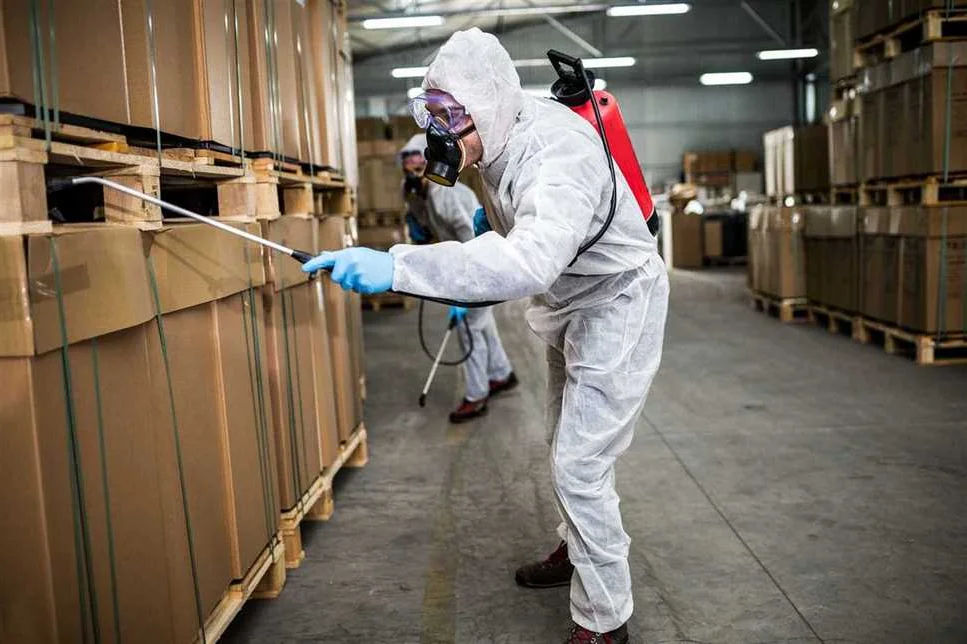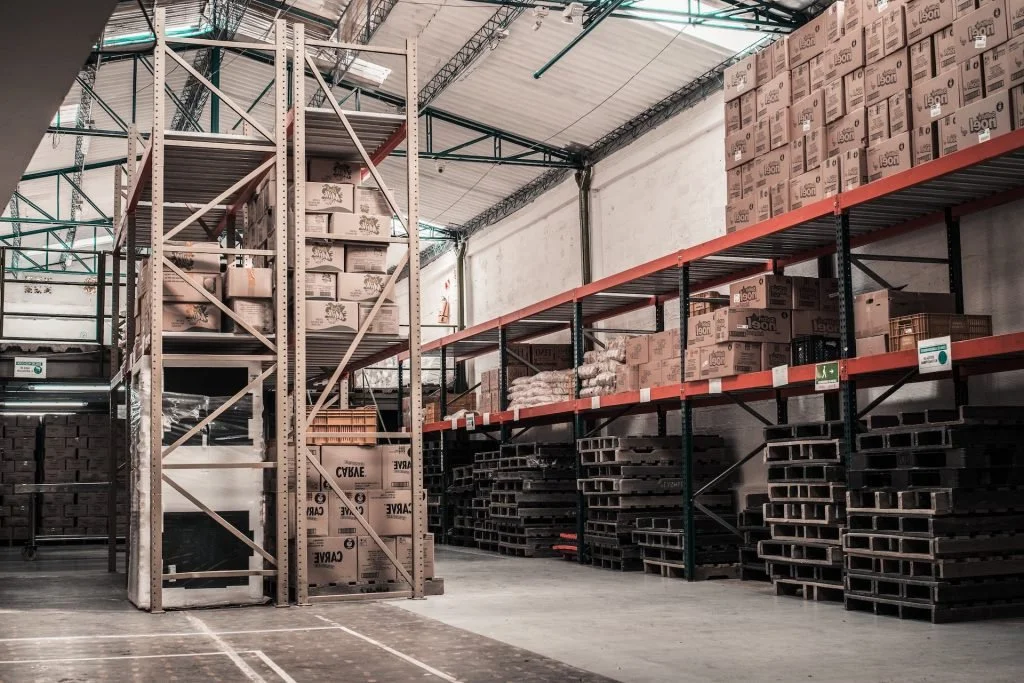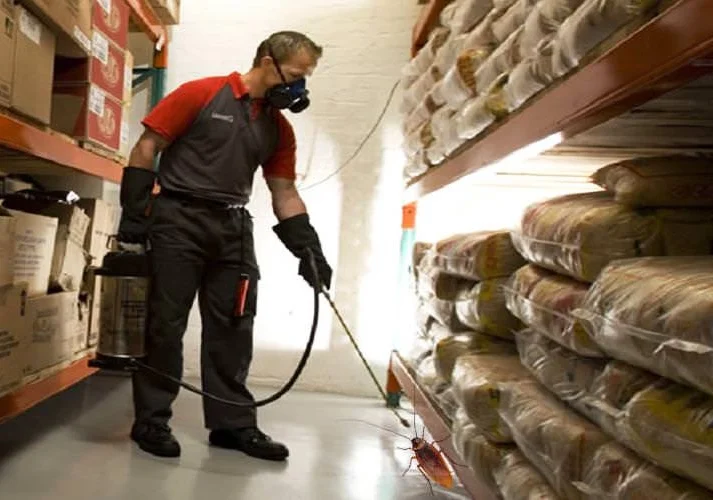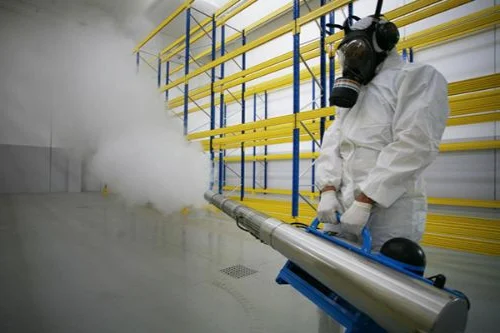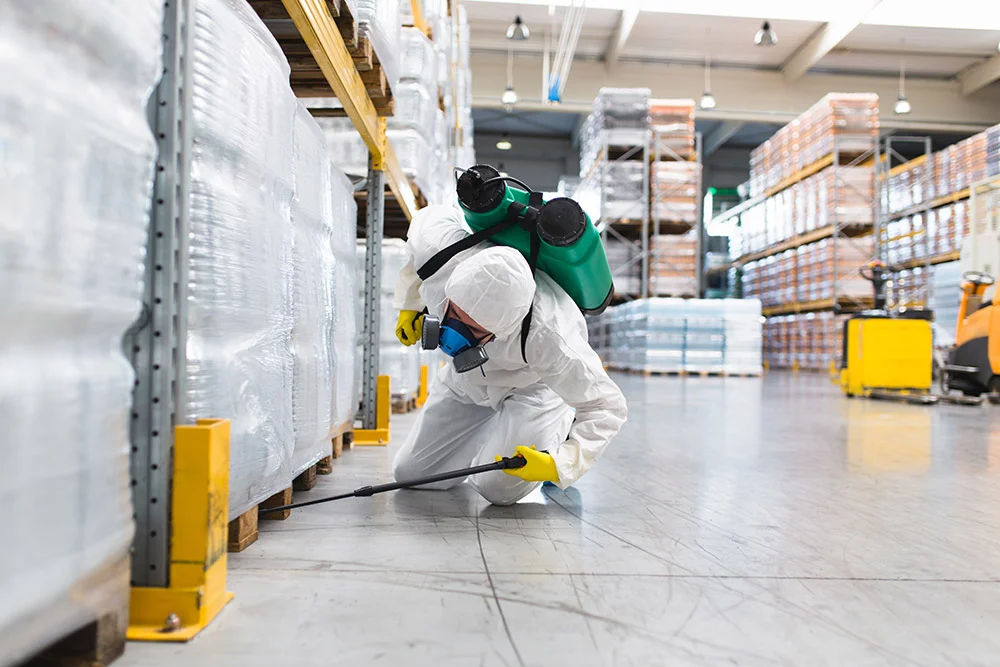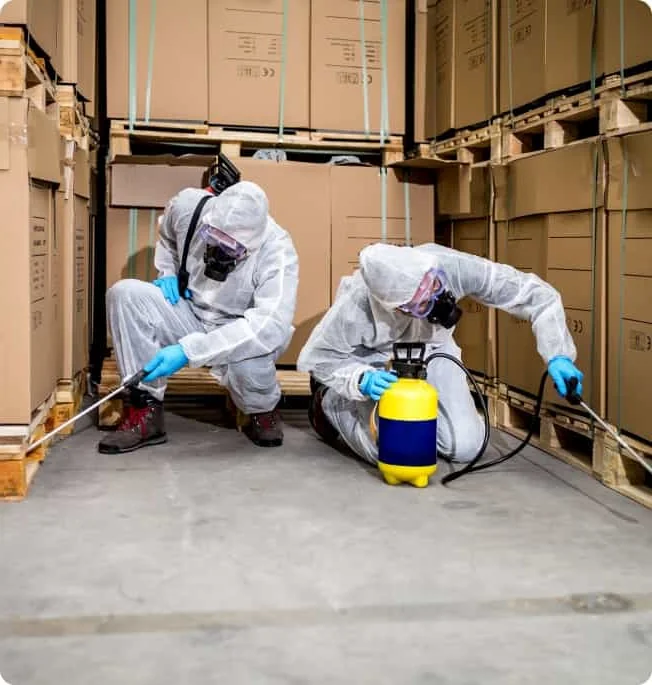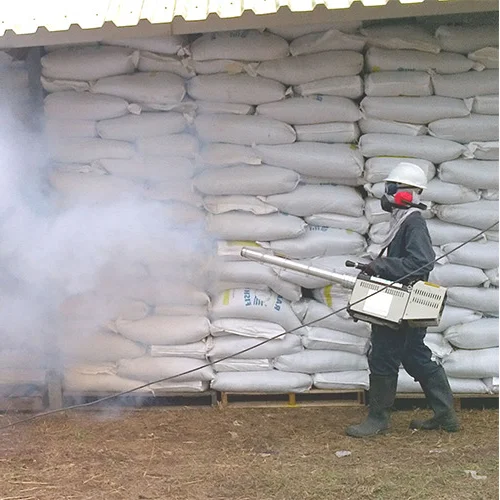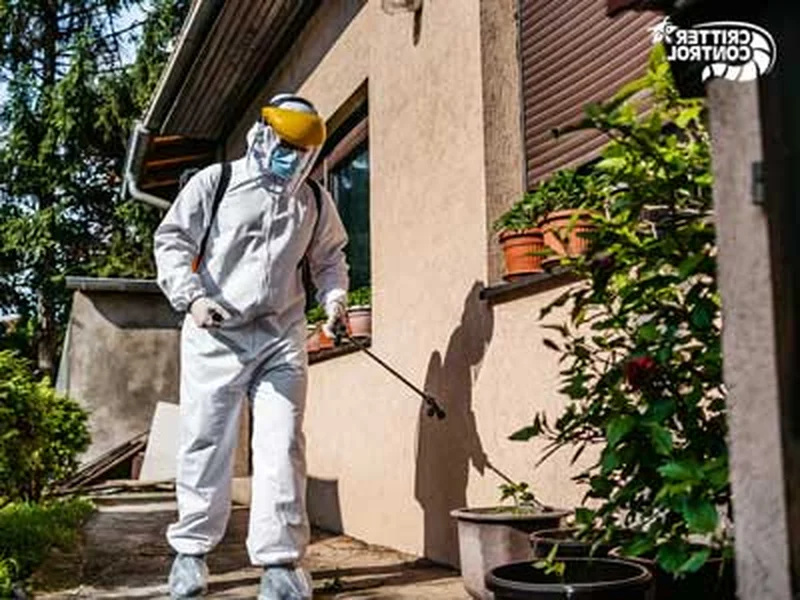Warehouse facilities face unique pest control challenges that can threaten inventory integrity, compromise food safety standards, and disrupt critical supply chain operations. Warehouse pest control requires specialized expertise that goes beyond traditional commercial pest management – it demands understanding of industrial operations, regulatory compliance requirements, and the economic impact of pest-related disruptions. From rodents contaminating stored goods to birds nesting in high bay areas, pest issues in warehouse environments can quickly escalate into costly problems affecting entire distribution networks.
Modern warehouse operations cannot afford pest-related shutdowns, contamination events, or regulatory violations. That's why leading distribution companies partner with experienced commercial pest control service providers who understand the complexities of large-scale industrial facilities. Effective warehouse pest management combines proactive monitoring, targeted treatments, and comprehensive documentation to maintain pest-free environments that protect both products and operational continuity.
Protect your warehouse operations with professional pest control in warehouse facilities
24/7 emergency response for critical situations.
Schedule your facility assessment today!
Critical Pest Control Challenges in Warehouse Operations
Warehouse environments present distinct pest management challenges that require specialized approaches and industry-specific expertise. Understanding these challenges is essential for developing effective warehouse pest control strategies:
-
Massive facility scale and complexity Warehouses often span hundreds of thousands of square feet with high ceilings, multiple loading docks, and complex storage systems that create numerous pest harborage opportunities and make comprehensive monitoring challenging.
-
Constant product and vehicle movement Continuous loading and unloading operations create multiple entry points for pests, while incoming shipments can introduce new pest populations from various geographic locations and suppliers.
-
Diverse stored product vulnerabilities Different types of inventory – from food products to raw materials – attract specific pest species and require tailored protection strategies to prevent contamination and damage.
-
Regulatory compliance pressures Food storage facilities must meet strict FDA, USDA, and other regulatory standards, while all warehouses face OSHA requirements and customer audit expectations that demand comprehensive pest management documentation.
-
Operational continuity requirements Pest control activities must be coordinated carefully to avoid disrupting critical operations, requiring flexible scheduling and treatment methods that work around intensive operational schedules.
-
Environmental control limitations Large warehouse spaces are difficult to climate-control effectively, creating temperature and humidity variations that can favor pest development in certain areas of the facility.
These challenges require comprehensive, systematic approaches that integrate seamlessly with warehouse operations while providing the thorough protection necessary to maintain product integrity and regulatory compliance.
Common Warehouse Pests and Their Impact
Warehouse facilities encounter specific pest challenges that can severely impact operations, inventory quality, and regulatory compliance. Here are the most critical pest threats facing modern warehouse operations:
Rodents
Professional rodent monitoring in warehouse storage areas
Rodents represent the most significant pest threat to warehouse operations, capable of contaminating vast quantities of stored products and causing extensive structural damage. Mice and rats are attracted to warehouses by abundant food sources, shelter opportunities, and the constant flow of goods that can mask their presence until populations become established.
Beyond product contamination, rodents can damage packaging, chew through electrical systems creating fire hazards, and trigger regulatory violations that result in costly shutdowns. Effective rodent control in warehouse environments requires comprehensive monitoring systems, strategic exclusion work, and rapid response protocols to prevent small intrusions from becoming major infestations.
Stored Product Insects
Monitoring systems for stored product insects in food warehouses
Stored product insects including beetles, moths, and weevils pose serious threats to food warehouses and facilities storing organic materials. These pests can develop inside packaging, contaminate products throughout their lifecycle, and quickly spread throughout large storage areas if not detected early.
Prevention strategies focus on incoming inspection protocols, environmental monitoring, and rapid response to early detection. Temperature management, moisture control, and comprehensive sanitation programs are essential components of stored product insect management in warehouse environments.
Birds
Bird exclusion systems in warehouse high-ceiling areas
Birds present unique challenges in warehouse environments, particularly in facilities with high ceilings and open bay doors. Sparrows, pigeons, and other birds can establish nesting sites in rafters and storage racks, contaminating products below with droppings and creating serious food safety hazards.
Comprehensive bird management combines exclusion techniques, deterrent systems, and habitat modification to prevent bird entry and establishment. Professional programs address both immediate bird removal needs and long-term prevention strategies that maintain bird-free warehouse environments.
Crawling Insects
Cockroaches, ants, and other crawling insects can establish populations in warehouse environments, particularly in areas with moisture, food debris, or favorable temperatures. These pests can contaminate products, trigger customer complaints, and create regulatory compliance issues that affect warehouse certifications and customer relationships.
Effective management requires comprehensive sanitation programs, moisture control, and targeted treatment strategies that address pest harborage areas without compromising product safety or operational activities. Regular monitoring and preventive treatments help maintain insect-free warehouse environments.
Flying Insects
Flies, gnats, and other flying insects can enter warehouses through open bay doors and establish breeding sites in organic debris or moisture accumulation areas. Beyond contamination risks, flying insects can trigger automated pest detection systems and create customer perception issues during facility tours and audits.
Control strategies include air curtain systems at entrances, breeding site elimination, targeted treatment of development areas, and comprehensive sanitation programs that remove attractants and breeding opportunities throughout the facility.
Integrated Warehouse Pest Management Programs
Effective warehouse pest control requires comprehensive, systematic approaches that integrate multiple strategies and technologies to provide reliable protection across large, complex facilities. Modern Integrated Pest Management (IPM) programs combine prevention, monitoring, and targeted intervention to maintain pest-free environments while supporting operational efficiency.
Professional warehouse pest management programs typically include detailed facility inspections, comprehensive monitoring systems, preventive treatments, rapid response protocols, and detailed documentation systems that support regulatory compliance and operational decision-making.
Operational Integration
Our warehouse pest control programs are designed to integrate seamlessly with your operational schedule, providing comprehensive protection without disrupting critical distribution activities or compromising worker safety.
Here's a comparison of different pest management approaches for warehouse facilities:
| Management Approach |
Benefits |
Best Applications |
| Reactive Response Only |
Lower immediate costs; addresses specific problems as they arise; minimal operational disruption.
|
Low-risk warehouses storing non-food products; facilities with minimal regulatory requirements and low contamination risk.
|
| Preventive Perimeter Program |
Reduces pest entry; prevents most common infestations; moderate cost structure; basic documentation.
|
General merchandise warehouses; facilities with moderate pest pressure; operations with basic customer audit requirements.
|
| Comprehensive IPM Program |
Maximum prevention; detailed monitoring; comprehensive documentation; regulatory compliance support.
|
Food storage facilities; regulated industries; high-value inventory protection; facilities requiring detailed audit documentation.
|
| Full-Service Management |
Complete outsourcing; 24/7 monitoring; emergency response; comprehensive compliance support; liability protection.
|
Large distribution centers; multi-site operations; facilities with complex regulatory requirements; critical supply chain operations.
|
The optimal approach depends on facility characteristics, inventory types, regulatory requirements, and operational priorities. Most food warehouses and regulated facilities benefit from comprehensive IPM programs, while general merchandise facilities may find preventive programs adequate.
Advanced Monitoring and Detection Technologies
Digital Monitoring Systems
Modern warehouse pest control leverages advanced digital monitoring technologies that provide real-time pest activity data, enabling immediate response to emerging threats before they impact operations. Smart traps, sensor networks, and automated reporting systems transform traditional pest management into precise, data-driven operations.
These systems provide 24/7 monitoring coverage across massive warehouse spaces, automatically alerting management to pest activity and providing detailed analytics that help optimize prevention strategies and demonstrate compliance with regulatory requirements.
-
Smart trap networks Wireless monitoring stations provide instant alerts when pest activity is detected, enabling rapid response before populations can establish or spread throughout the facility.
-
Environmental monitoring Temperature, humidity, and other environmental sensors help identify conditions that favor pest development, enabling proactive environmental management.
-
Automated reporting systems Real-time data collection and analysis provide detailed documentation for regulatory compliance and operational decision-making.
-
Predictive analytics Historical data analysis helps identify patterns and predict potential pest issues, enabling preventive interventions that stop problems before they start.
-
Mobile inspection tools Tablet-based inspection systems ensure consistent, thorough inspections while providing immediate access to historical data and treatment records.
These technological advances enable more precise, efficient pest management while providing the comprehensive documentation and real-time awareness that modern warehouse operations require.
Ready to implement advanced pest control in warehouse operations?
Contact our specialists for a comprehensive facility assessment
and customized pest management program!
Industry-Specific Warehouse Solutions
Food and Beverage Distribution
Food and beverage warehouses face the strictest pest control requirements, with FDA, USDA, and other regulatory standards demanding comprehensive pest management programs. These facilities require specialized protocols that prevent contamination while maintaining the rapid throughput essential to food distribution operations.
Programs include incoming shipment inspection protocols, specialized monitoring for stored product insects, comprehensive sanitation coordination, and detailed documentation systems that support regulatory compliance and customer audit requirements.
Pharmaceutical and Medical Distribution
Pharmaceutical warehouses require pest control programs that meet strict regulatory standards while protecting sensitive products from contamination. These facilities often operate under controlled environmental conditions that require specialized pest management approaches compatible with clean room protocols and regulatory requirements.
Effective programs emphasize prevention, use only approved treatment methods, and provide comprehensive documentation that supports FDA inspections and pharmaceutical industry compliance requirements.
Retail Distribution Centers
Retail distribution centers handle diverse product mixes that create varied pest management challenges. From clothing and electronics to health and beauty products, these facilities require flexible pest control programs that protect different product types while maintaining the rapid throughput essential to retail supply chains.
Programs focus on perimeter protection, comprehensive monitoring throughout diverse storage areas, and rapid response protocols that prevent pest issues from affecting customer shipments or retail store operations.
Cold Storage and Frozen Food Facilities
Cold storage warehouses present unique pest management challenges due to extreme temperature variations, condensation issues, and the specialized equipment required for low-temperature operations. Pest control programs must address temperature shock areas, prevent ice buildup issues, and use treatment methods compatible with frozen food safety requirements.
Specialized approaches include temperature-appropriate monitoring systems, moisture management coordination, and treatment protocols designed for extreme temperature environments while maintaining food safety standards.
Regulatory Compliance and Documentation
Meeting Industry Standards
Warehouse pest control programs must meet various regulatory requirements depending on the products stored and distributed. Food facilities face FDA and USDA standards, while all warehouses must comply with OSHA requirements and industry-specific regulations that govern pest management practices and documentation.
Professional pest control programs provide comprehensive documentation systems that support regulatory compliance, customer audits, and industry certifications. This includes detailed inspection records, treatment logs, monitoring data, and compliance reporting that demonstrates due diligence and regulatory adherence.
-
FDA compliance support Food warehouse programs meet FDA requirements for pest control in food storage facilities, including detailed documentation and approved treatment methods.
-
HACCP integration Pest control programs integrate with Hazard Analysis and Critical Control Points systems to support comprehensive food safety management.
-
Customer audit preparation Detailed documentation and program management support successful customer audits and maintain supplier certification requirements.
-
Industry certification support Programs support AIB, SQF, BRC, and other industry certifications that require comprehensive pest management documentation.
-
Regulatory inspection readiness Comprehensive records and program documentation ensure facilities are prepared for unannounced regulatory inspections.
Effective compliance management requires ongoing attention to changing regulations, regular program reviews, and continuous improvement processes that maintain the highest standards of pest management and documentation.
Emergency Response and Crisis Management
Rapid Response Protocols
Warehouse operations cannot afford extended shutdowns due to pest issues. Emergency pest control responses must be immediate, effective, and coordinated to minimize operational disruption while addressing critical pest threats that could compromise product integrity or regulatory compliance.
Professional emergency response protocols include 24/7 availability, rapid assessment procedures, immediate containment strategies, and comprehensive documentation that supports insurance claims and regulatory reporting requirements.
Crisis Prevention and Preparedness
The best emergency response is prevention. Comprehensive pest management programs include crisis prevention strategies that identify potential issues before they become emergencies, maintain rapid response capabilities, and provide the monitoring and documentation needed to demonstrate due diligence in pest management.
Preparedness includes maintaining emergency contact protocols, pre-approved treatment procedures, rapid response equipment availability, and coordination with warehouse management to ensure immediate access and effective communication during crisis situations.
Seasonal Warehouse Pest Management
Spring Activation (March-May)
- Comprehensive facility inspections
- Perimeter treatment intensification
- Exclusion work and facility maintenance
- Monitoring system optimization
Focus: Prevent seasonal pest emergence and prepare facilities for increased activity periods.
Peak Activity (June-August)
- Intensive monitoring and inspections
- Enhanced treatment frequency
- Flying insect management emphasis
- Environmental condition management
Focus: Maintain control during peak pest activity with enhanced monitoring and rapid response.
Prevention Phase (September-November)
- Facility winterization and exclusion
- Stored product insect monitoring
- Heating system pest-proofing
- Annual program evaluation
Focus: Prevent pest entry as temperatures drop and prepare for winter operational patterns.
Interior Management (December-February)
- Indoor pest monitoring emphasis
- Rodent control intensification
- Environmental system coordination
- Program planning and optimization
Focus: Maintain comprehensive interior protection and plan improvements for the upcoming year.
Warehouse Pest Control Success Stories
"PestControl100's comprehensive program transformed our 500,000 sq ft food distribution center. We've maintained zero pest-related regulatory violations for three years running, and their digital monitoring system provides the real-time data we need for operational decisions."
- Michael Chen, Distribution Center Manager
★★★★★
"The emergency response capabilities have been invaluable. When we had a potential contamination issue, their team was on-site within two hours with a complete action plan. They helped us avoid what could have been a major operational shutdown."
- Sarah Martinez, Operations Director
★★★★★
"Managing pest control across our multi-site pharmaceutical distribution network was complex until we partnered with PestControl100. Their standardized protocols and comprehensive reporting have streamlined our compliance management significantly."
- James Thompson, Facility Operations Manager
★★★★★
Frequently Asked Questions
How often should warehouse facilities receive pest control services?
Service frequency depends on facility size, products stored, and regulatory requirements. Most food warehouses require weekly or bi-weekly services, while general merchandise facilities may need monthly service. High-risk facilities or those with active pest pressure may require daily monitoring with weekly treatment services. The optimal schedule is determined through initial assessment and ongoing monitoring data.
What documentation is required for regulatory compliance in warehouse pest control?
Requirements vary by industry, but typically include detailed inspection reports, treatment logs, monitoring records, pest sighting documentation, corrective action reports, and trend analysis. Food facilities need additional documentation for FDA compliance, including HACCP integration records and approved chemical usage logs. Professional programs provide comprehensive documentation systems that meet all applicable requirements.
How do you coordinate pest control with warehouse operations?
Professional warehouse pest control requires careful coordination with operational schedules. This includes flexible service timing that works around peak operational periods, safety protocols that protect workers and products, communication systems that keep operations informed of service activities, and emergency protocols for urgent situations that require immediate response regardless of operational status.
What makes warehouse pest control different from other commercial pest control?
Warehouse pest control involves unique challenges including massive facility scale, constant product movement, diverse storage environments, strict regulatory requirements, and the need for specialized equipment and techniques. Professional warehouse programs use industrial-grade monitoring systems, specialized treatment methods, and comprehensive documentation that addresses the specific needs of large-scale distribution operations.
Warehouse Pest Control Resources
Digital Integration Capabilities
Our warehouse pest control programs integrate with facility management systems, providing automated reporting, real-time monitoring alerts, and seamless data integration that supports operational decision-making and regulatory compliance requirements.
Multi-Site Program Management
For warehouse networks and distribution chains, we provide standardized protocols, centralized reporting, and coordinated management that ensures consistent pest control standards across all facilities while adapting to local conditions and requirements.
Training and Education Programs
Comprehensive training programs for warehouse staff include pest identification, prevention techniques, proper reporting procedures, and regulatory compliance requirements that help create a pest-aware workforce and support overall program effectiveness.
Environmental Management Support
Our specialists work with facility management teams to identify and address environmental conditions that favor pest development, including moisture control, temperature management, and facility design recommendations that support long-term pest prevention.
Warehouse Pest Prevention Best Practices
Facility Design and Maintenance
Effective warehouse pest prevention begins with proper facility design and maintenance practices. This includes sealing entry points, maintaining proper drainage, ensuring adequate ventilation, and implementing design features that minimize pest harborage opportunities throughout the facility.
Regular maintenance schedules should include structural inspections, exclusion work, environmental monitoring, and coordination with pest control professionals to address issues before they become major problems.
Operational Procedures
Warehouse operations play a critical role in pest prevention. This includes incoming shipment inspection protocols, proper storage practices, sanitation procedures, waste management protocols, and employee training programs that create awareness and support comprehensive pest prevention efforts.
Effective procedures are integrated into daily operations, providing consistent pest prevention practices that support overall facility cleanliness and reduce pest attractants throughout the warehouse environment.
Monitoring and Documentation
Comprehensive monitoring systems provide early detection of pest activity while generating the documentation required for regulatory compliance and operational decision-making. This includes regular inspection schedules, digital monitoring systems, detailed record-keeping, and trend analysis that identifies potential issues before they impact operations.
Professional monitoring programs provide the consistency and expertise needed to maintain effective pest detection while ensuring all documentation meets regulatory and customer audit requirements.
Investment Return and Cost-Benefit Analysis
Preventing Costly Shutdowns
Professional warehouse pest control programs provide significant return on investment by preventing costly operational shutdowns, product contamination events, and regulatory violations. The cost of comprehensive pest management is minimal compared to the potential costs of pest-related disruptions to warehouse operations.
Effective programs also support operational efficiency by eliminating pest-related maintenance issues, reducing product damage and returns, and maintaining the facility conditions necessary for optimal warehouse performance.
Protecting Product Integrity
Pest contamination can result in massive product recalls, disposal costs, and reputation damage that far exceeds the investment in professional pest control. Comprehensive programs protect product integrity while maintaining the quality standards essential for customer satisfaction and regulatory compliance.
Prevention-focused approaches provide the most cost-effective protection, avoiding the much higher costs associated with treating established infestations or addressing contamination events after they occur.
Supporting Business Continuity
Reliable pest control supports business continuity by maintaining the consistent, pest-free conditions necessary for uninterrupted warehouse operations. This includes supporting customer audit requirements, maintaining industry certifications, and providing the documentation needed for insurance and regulatory compliance.
Professional programs provide peace of mind that pest issues will be prevented or addressed quickly, allowing warehouse management to focus on core operational activities without pest-related concerns or disruptions.

